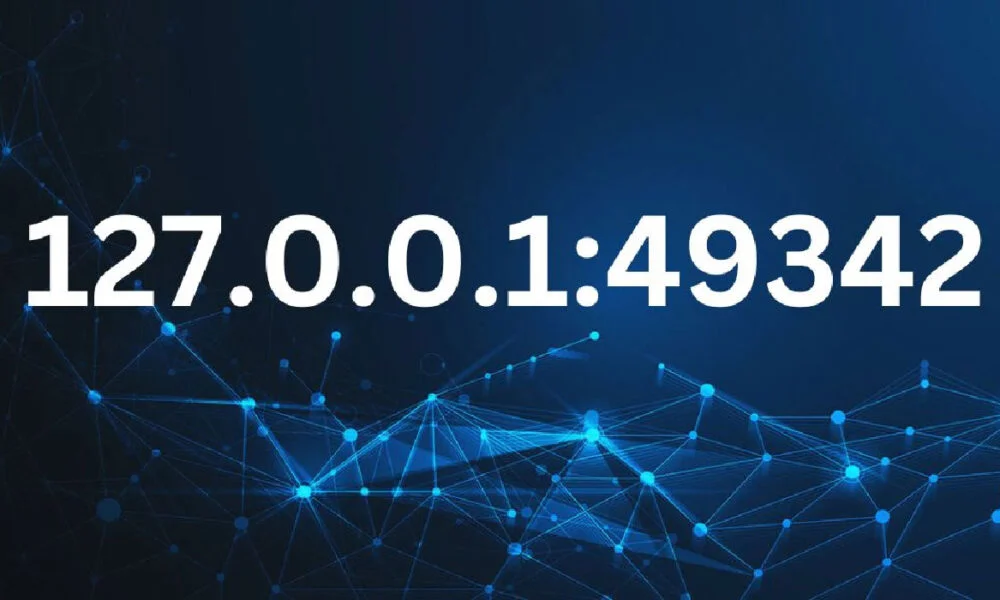Introduction to 127.0.0.1:49342
127.0.0.1:49342 At first glance, “127.0.0.1:49342” might appear to be a random string of numbers and punctuation. For those familiar with networking or programming, however, it holds a special meaning. This combination represents a local IP address (127.0.0.1) paired with a specific port (49342). It’s part of the broader landscape of computer networking, enabling communication between applications within the same machine.
To truly understand 127.0.0.1:49342, it’s essential to break it down. The IP address “127.0.0.1” is universally recognized as the loopback address, a critical part of TCP/IP networking. Meanwhile, the port number “49342” is one of the many available ports used for application-specific communication. Together, they form a gateway for local processes to interact without external interference.
This article delves into the technical, practical, and even intriguing aspects of 127.0.0.1:49342. Whether you’re a developer, a cybersecurity enthusiast, or simply curious, there’s plenty to explore in the realm of localhost and port communication.
Understanding the Loopback Address: 127.0.0.1:49342

The loopback address, 127.0.0.1:49342, serves as the backbone of local communication in computer systems. It’s a default IP address that always points back to the host machine, enabling internal processes to communicate as if they were over a network.
Why is this necessary? In many scenarios, applications need to exchange information but don’t require external network access. For example, during development and testing, developers often simulate client-server interactions on their own machines. The loopback address allows for such communications without needing a live internet connection.
Another critical use of 127.0.0.1 is ensuring network-related components are functioning correctly. By pinging this address, system administrators can verify whether the TCP/IP stack is operational. This functionality is foundational in diagnosing and troubleshooting network issues, making 127.0.0.1 a vital tool in any IT professional’s arsenal.
Moreover, the loopback address enhances security by restricting communication to the local machine. External devices cannot access 127.0.0.1 directly, creating a safe space for sensitive interactions like database queries or configuration processes.
The Role of Ports: Why 49342?
Ports are like virtual doors on a computer, facilitating communication between specific processes or applications. With over 65,000 ports available, each one serves a unique purpose in managing data flow. Port 49342 is an arbitrary choice often used dynamically by applications for temporary communication.
Dynamic or ephemeral ports, such as 49342, are typically assigned by the operating system. When an application needs to establish a connection, the system selects an available port from a predefined range. This ensures that multiple applications can run simultaneously without interference.
Port 49342 is not reserved for any specific service or protocol, making it a versatile choice for developers. Its use can vary widely, from debugging software to facilitating local API calls. Understanding the role of such ports is crucial for managing and securing application communications effectively.
Lastly, ports like 49342 can sometimes become a point of vulnerability if misconfigured. Proper firewall settings and monitoring are essential to prevent unauthorized access or malicious activities.
Real-World Applications of 127.0.0.1:49342
The combination of 127.0.0.1 and port 49342 plays a significant role in real-world scenarios, particularly in software development and testing. Developers often rely on the loopback address to simulate client-server models without external dependencies.
For instance, a web developer might run a local server on 127.0.0.1:49342 to test an application. This setup allows them to see how their code behaves in a controlled environment before deploying it to a live server. Such practices are common in frameworks like Node.js, Django, and Flask, where running a local server is an integral part of the workflow.
Another practical application lies in debugging. By directing logs or test requests to 127.0.0.1:49342, developers can analyze behavior and diagnose issues efficiently. Tools like Postman or cURL often leverage this functionality to send API requests locally, ensuring the application performs as expected.
Even in gaming, localhost and specific ports are used for running local game servers. This allows players to test mods, configurations, or multiplayer settings without needing an active internet connection.
Security Implications of 127.0.0.1:49342
While 127.0.0.1:49342 is inherently secure due to its local scope, there are potential risks if not properly managed. Misconfigurations, outdated software, or malicious scripts can exploit local ports, leading to unintended consequences.
One common risk is the accidental exposure of sensitive services. For example, if a developer mistakenly binds a service to 0.0.0.0 instead of 127.0.0.1, it becomes accessible to external networks. This oversight can lead to unauthorized access, data breaches, or even system compromises.
Another challenge is managing port conflicts. If multiple applications attempt to use port 49342 simultaneously, it can cause disruptions or crashes. Proper port management and error handling are essential to mitigate such risks.
Finally, monitoring and logging are crucial. Even though 127.0.0.1 restricts external access, malicious actors on the same machine (like compromised software) can exploit open ports. Regular audits and robust security practices ensure that localhost remains a safe environment for internal processes.
How to Work with 127.0.0.1:49342
Using 127.0.0.1:49342 effectively requires a combination of technical knowledge and practical skills. Setting up and managing local communications involves configuring servers, testing applications, and monitoring interactions.
For beginners, tools like XAMPP, WAMP, or local Python servers provide an easy way to get started. These platforms often default to localhost and a predefined port, simplifying the process of running local servers. Customizing the port to 49342 can be done by editing configuration files or passing command-line arguments.
Advanced users may opt for manual setups, leveraging tools like Docker or virtual machines. These allow for greater flexibility and control over the environment. Mapping 127.0.0.1:49342 in such setups often involves defining network bridges or exposing specific ports in container configurations.
Debugging tools are also indispensable. Applications like Wireshark or netstat can monitor traffic on 127.0.0.1:49342, providing insights into data flow and potential issues. This helps developers and administrators ensure smooth and secure operations.
Troubleshooting Common Issues
Working with 127.0.0.1:49342 is not without its challenges. Common issues include port conflicts, firewall restrictions, and misconfigurations. Fortunately, most problems can be resolved with a systematic approach.
Port Conflicts: When an application fails to bind to 49342, it’s often due to another process already using the port. Tools like netstat or lsof can identify the culprit, allowing users to terminate or reconfigure the conflicting process. Choosing an alternative port is another simple solution.
Firewall Restrictions: Local ports may sometimes be blocked by security software. Adjusting firewall settings to allow traffic on 49342 ensures uninterrupted communication. However, it’s important to restrict these changes to localhost to maintain security.
Misconfigurations: Errors in configuration files or startup scripts can prevent proper binding to 127.0.0.1:49342. Reviewing logs and testing with minimal setups often reveals the root cause. Ensuring consistency in IP and port declarations across the application is equally important.
The Future of Localhost and Ports
As technology evolves, the role of localhost and specific ports like 49342 continues to expand. With the rise of containerization, microservices, and edge computing, localized communication is more important than ever.
Tools like Docker and Kubernetes have revolutionized how developers use localhost. Port mapping is now a routine part of deploying containerized applications, ensuring seamless communication between services. In such environments, 127.0.0.1:49342 could represent a microservice or a critical internal API.
Additionally, advancements in security practices are making localhost interactions safer. Enhanced encryption, stricter access controls, and automated monitoring tools are reducing risks associated with open ports. These innovations are shaping a future where localhost is both functional and secure.
Lastly, the increasing adoption of IPv6 may introduce new paradigms. While 127.0.0.1 remains relevant in IPv4, its IPv6 counterpart (::1) offers similar functionality with improved scalability and efficiency.
Conclusion
The world of 127.0.0.1:49342 is both fascinating and essential for modern computing. From facilitating development and debugging to enabling secure local communications, it plays a pivotal role in countless applications. Understanding its technical nuances and practical implications empowers users to harness its full potential.
Whether you’re a seasoned developer or a curious learner, diving into localhost and ports reveals a wealth of insights. By mastering concepts like 127.0.0.1 and port management, you can navigate the complexities of networking with confidence. The next time you encounter 127.0.0.1:49342, you’ll know there’s much more to it than meets the eye.






